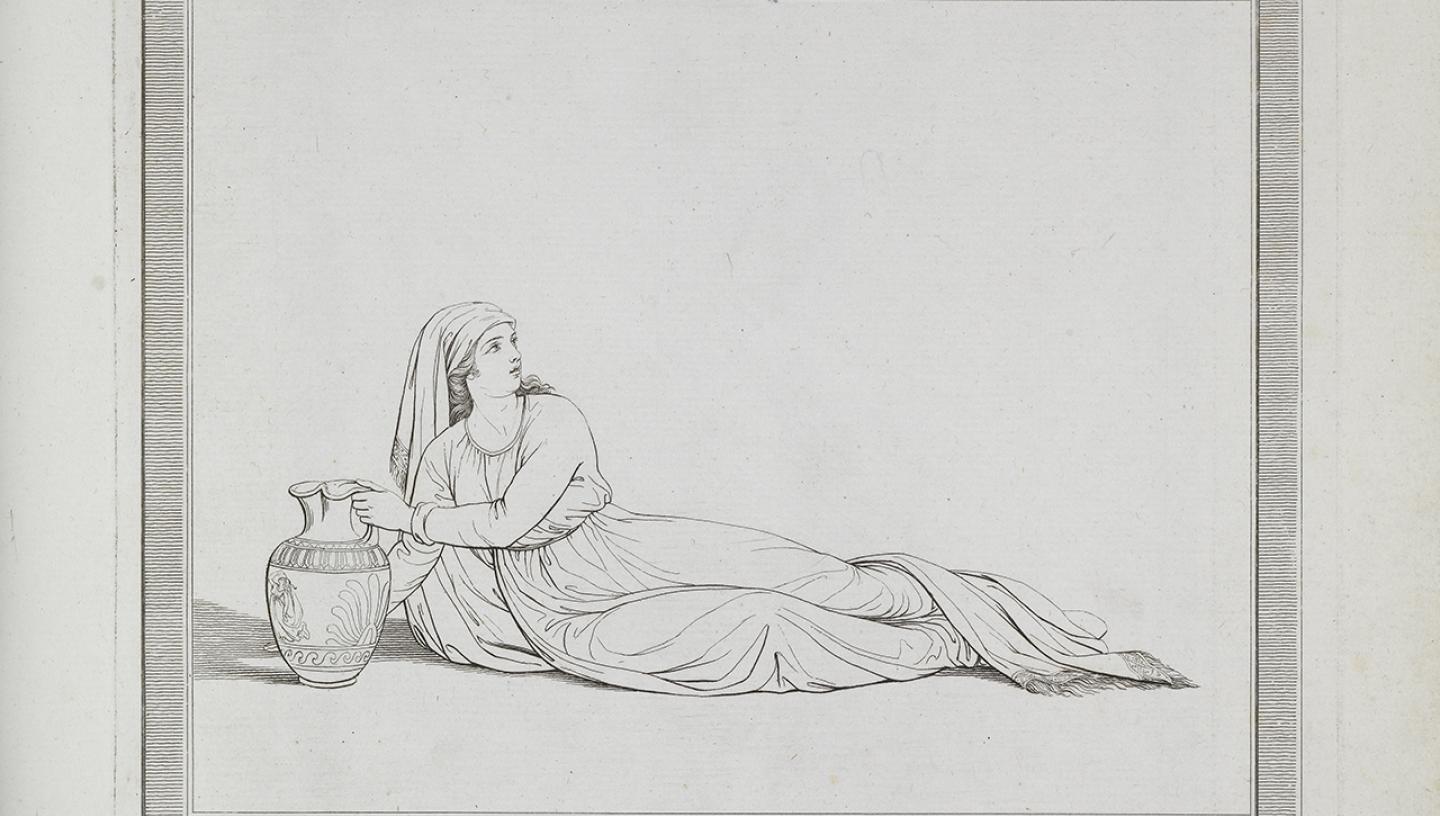
03 Mar 2017
Performer is the sixth post in our series exploring the many fascinating identities Emma Hamilton held throughout her life. It explores Emma's remarkable new artform that captivated Europe.
Emma Hamilton is usually known as the lover of the great naval hero, Admiral Lord Nelson. However, this reductive stereotype obscures the many other facets of her extraordinary and eventful life. In order to illuminate Emma’s path Dr Quintin Colville, curator of our major exhibition Emma Hamilton: Seduction and Celebrity, threads together a sequence of the more important identities that Emma inhabited during her 49 years. Mistress is not one of them. The sixth in this remarkable progression is that of ‘performer’.
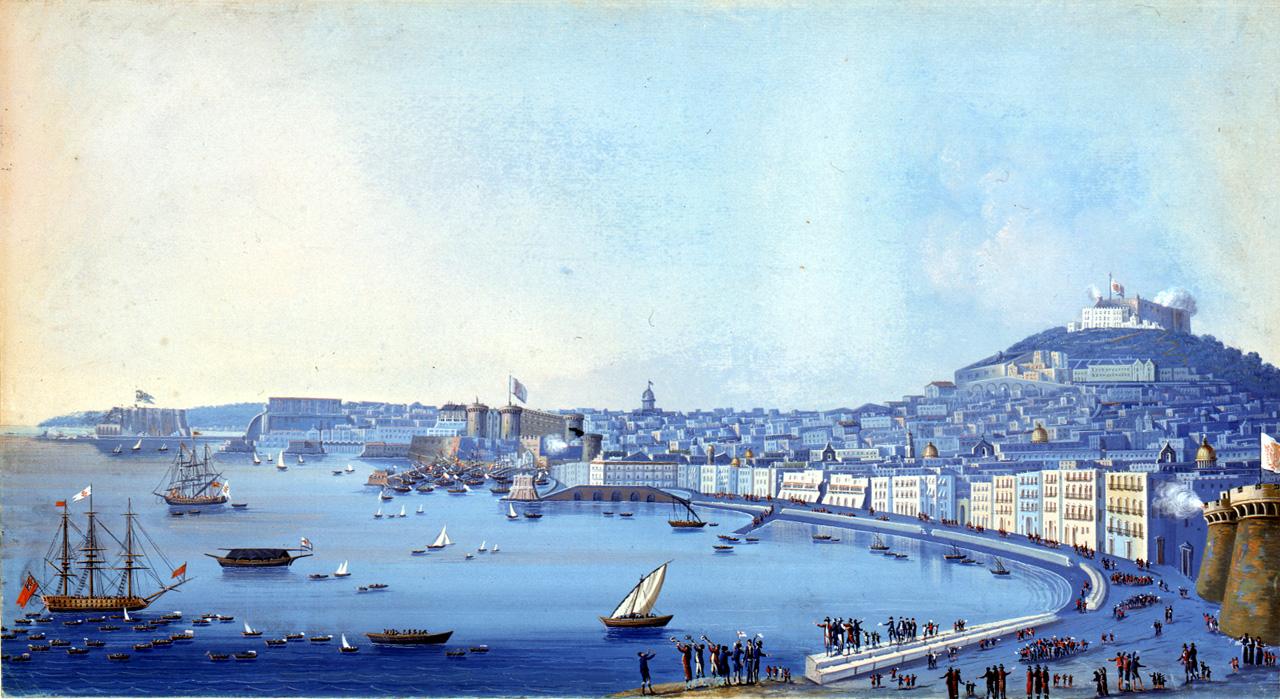
A neopolitan education
Naples provided the formal education that Emma profoundly desired. Within little more than a year, her achievements in languages and, conspicuously, in singing, won her considerable attention. Delighted with Emma’s progress, Sir William Hamilton wrote to her former lover, Charles Greville, as follows:
‘She really deserves everything and has gained the love of every body… [she is] preached up by the Queen & nobility a rare example of virtue … she begins to sing in a capital stile … she will excel any dilettante in England … her knowledge of music will surprise you as it does me for I did not expect her to apply as she has done.’
There was, however, one area that Emma made distinctively her own. Her innovative form of performance art – known as the ‘Attitudes’ – took Sir William’s friends and acquaintances by storm, and in due course would make her famous across Europe.
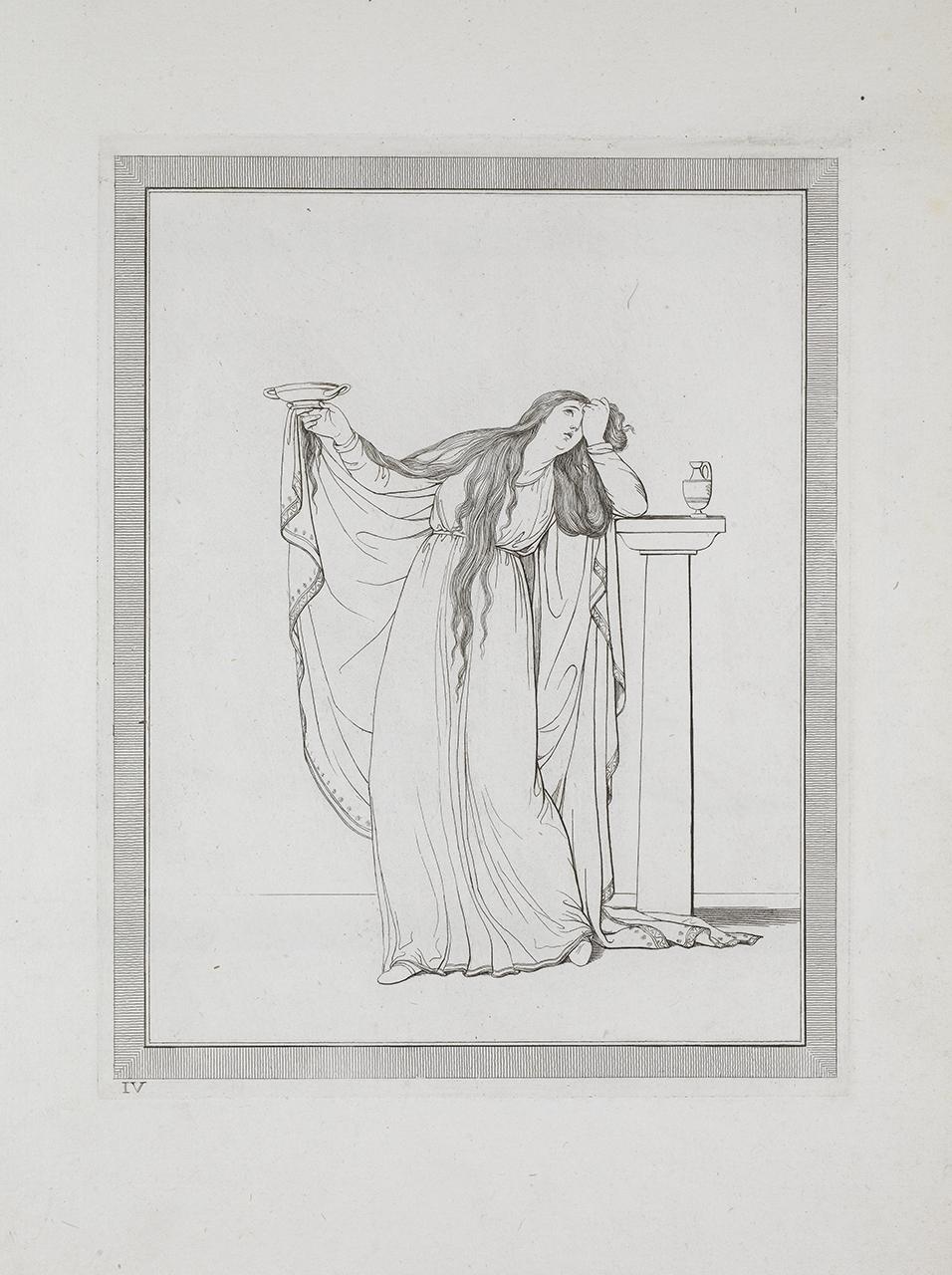
A new artform - Emma Hamilton's 'Attitudes'
Emma’s inspiration came from Sir William’s collections, Covent Garden theatre and Romney’s studio. Wearing simple Grecian costume, and using a few props, she wove together dramatic poses conjuring figures from antiquity, art and literature. Emma made sequences of dramatic realizations, and the transitions between them, seem effortless and magical. This was not a performance of dance, and it was often apparently simple movements – letting down her hair, rapidly re-positioning a shawl or adjusting her expression – that she used to conjure a different persona. One of those who witnessed the Attitudes at Sir William’s Palazzo Sessa was the German writer and philosopher, Johann Wolfgang von Goethe. He left this description:
‘[Sir William] has had a Greek costume made for her which becomes her extremely. Dressed in this, she lets down her hair and, with a few shawls, gives so much variety to her poses, gestures, expressions, etc., that the spectator can hardly believe his eyes. He sees what thousands of artists would have liked to express realized before him in movements and surprising transformations – standing, kneeling, sitting, reclining, serious, sad, playful, ecstatic, contrite, alluring, threatening, anxious, one pose follows another without a break.’
Sir William enthusiastically assisted Emma, but the brilliance of the performance reflected her inspiration and experience rather than mere coaching. Emma brought the paintings and sculptures that enraptured Grand Tourists in Naples dramatically to life before their eyes. Her poses became the must-see spectacle of the day, and the Attitudes were a tour de force and a creative summit. To some extent, they paralleled Emma’s work as Romney’s model, for whom she had learned to inhabit a character. But she was now both the artwork and the artist, and a degree of power and authorial control came with that territory. Graceful, beguiling and intellectually sophisticated, the Attitudes won Emma great acclaim. While she performed, the social disapproval frequently aimed at a woman from humble origins melted away. In the process, the controlling presence of male cultural authority was subtly challenged. Hamilton, the noted connoisseur, was left literally on the margins while Emma performed with a conviction that spoke of independent inspiration.
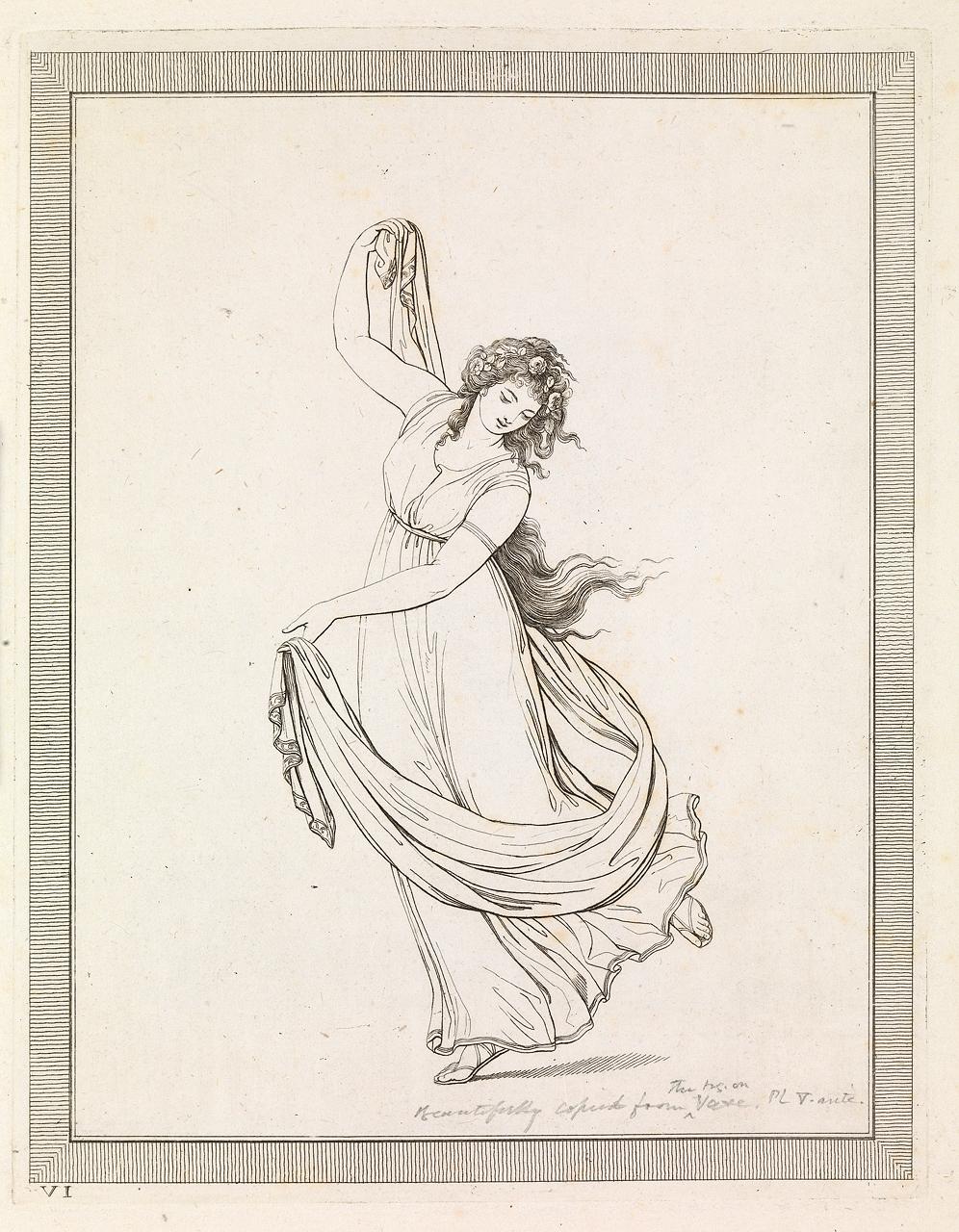
A new craze - Emma's fame spreads
One of many artists drawn to Emma and her theatrical skills was the Hanoverian painter Friedrich Rehberg, who travelled to Naples in 1791. He adopted a sparse style shorn of contextual detail; his crisp delineation capturing moments from the Attitudes and pinning them to the page. In some respects, his studies of Emma reflect Rehberg’s interest in the scholarly classicism of Johann Joachim Winckelmann. The purity of the resulting forms – simple dark lines on white paper – would have met with the latter’s approval. However, in some cases, their failure to articulate a sense of movement suggests static statuary rather than kinetic art.
Rehberg’s drawings were engraved by Tommaso Piroli and published in Rome in 1794. The volume – Drawings Faithfully Copied from Nature at Naples – helped to spread Emma’s fame across Europe from pictorial art to female fashion. The twelve Attitudes originally chosen by Rehberg (which comprised only a small part of Emma’s repertoire) included: figures from Greek mythology such as a Sibyl, the Muse of Dance and Niobe; characters from classical history such as Sophonisba; and a biblical figure, Mary Magdalene.
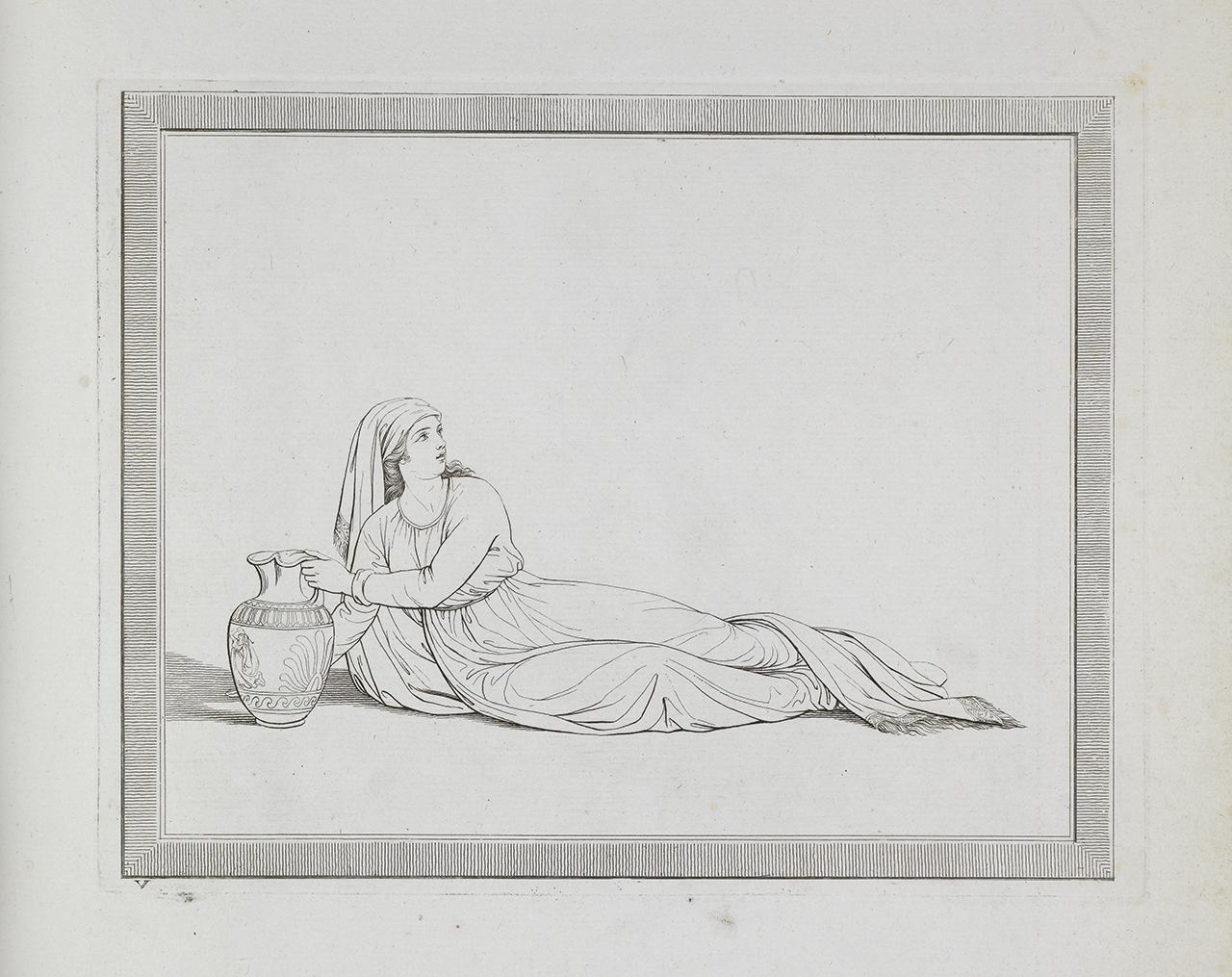
Rehberg was one of many French, German, Italian and British artists – including Angelica Kauffman, Gavin Hamilton, Wilhelm Tischbein and Guy Head – who were drawn to Emma’s growing fame. Their work flowed across Europe through the print trade, and Emma’s cultural influence soon extended from fine art to the simple, neo-classical female dress she helped to promote. The powerless and abandoned mistress that Hamilton had met in 1786 had, with his help, spectacularly redefined herself.
Emma Hamilton: Seduction and Celebrity
Explore the extraordinary life of Emma Hamilton, illustrated by over 200 objects in our major exhibition.